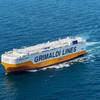Growing options emerge for ever-increasing data and Comms demand.
In the United States alone, 625 million tons of cargo is transported along the more than 12,000 miles of commercially navigable waterways each year, moving vital commodities to and from 38 of the nation’s 50 states. The advent of subchapter M has raised the bar significantly for as many as 5,000 inland vessels, both in terms of safety and the need to document and more closely control this tonnage. At the same time, domestic coastal transport and offshore energy support vessels also face growing communications requirements. These include new regulatory reporting schemes, commercial vessel ‘operating software’ and, of course, the requirement for better and cheaper voice comms.
Rising Traffic, Regulatory Pressures also Increase Comms Requirements
With the rising amount of activity along inland waterways and the move to digital systems, barge, ferry and tugboat operators’ need for on board connectivity is increasing. Ensuring vessel connectivity along inland waterways is different from connectivity on vessels moving across the open ocean. While in the ocean, a vessel may only need to worry about a crane or other piece of onboard machinery obstructing the signal from their antenna, but with inland waterways, you must add in the topographic elements of each area the vessel may travel.
The types of solutions for connectivity also differ in this arena. While near-shore solutions are the most reliable for inland waterways, a reliable network is essential, no matter how the connection is successfully obtained. And, while some ports – take the Port of Pittsburgh’s innovative ‘wireless waterway’ initiative, for example – are ramping up to improve the user experience for those desiring connectivity on the rivers, that sort of effort is still the exception, rather than the rule.
On the inland waterways, a fair amount of vessels are classed as owner/operators’ vessels, where an individual runs a single vessel, living their lives and running their business on board. The increase in operating expenses due to higher bunker costs, combined with low charter rates make it difficult for the owner and operators to stay in business. This concern is echoed around the globe, yet the amount of cargo transferred increases year over year. As implementation of cargo management systems, environmental reporting systems and engine and power management systems rapidly increase, the importance of reliable and cost-effective communications has multiplied, over time.
Challenges to Connectivity
An owner or operator can face challenges when organizing business communications for their vessel, starting with the lack of buying power or available budget. Most owner/operators rely on a marine very high frequency (VHF) radio and a domestic cellular contract for their business data and calls. Some inland vessels are also equipped with either Iridium or Inmarsat terminals, but the high cost of purchase remains a barrier to entry. However, the costs of satellite terminal purchase and usage are falling slowly.
A domestic cellular plan is an attractive option, and represents a significant cost advantage when the inland vessel is operating within a set territory. Travelling outside the domestic zone can represent higher and sometimes uncontrolled roaming costs. For example, regional (data only) 4G LTE plans are being released by operators in the European Union to help mitigate these issues, offering fixed monthly pricing. Additionally, coverage in remote areas can be enhanced by adding an external cellular antenna mounted as high as possible on a vessel. Therefore, a relatively small investment of a router and external antenna can yield excellent results, allowing business to continue even in a remote inland area.
However, for some inland waterways, even an external cellular antenna is insufficient to keep in touch. Satellite connectivity remains the only available option in these areas, but choosing a service that won’t bankrupt an operator remains a challenge.
Choosing the Right Solution
There are numerous mobile satellite service (MSS) operators available with new services being launched on a regular basis that can help resolve these issues. However, even within these major players’ product portfolios, the myriad options available can prove expensive, if not chosen carefully. Additionally, there is a difference in the user experience between land- and satellite-based communications. For example, the time lag for the round trip of a satellite radio signal can range from 600 to 2,000 milliseconds (ms), compared with less than 50 ms for terrestrial communications. The download and upload speeds are also significantly slower than that of land, making video streaming difficult.
Within the MSS world, there are a few well-known stalwarts that Speedcast partners with to provide efficient and cost-effective solutions; namely, Inmarsat, Iridium and Globalstar. With its fifth generation of geo-stationary satellites providing global coverage, Inmarsat can be an attractive option for adding satellite capabilities to an inland vessel. The most appropriate satellite terminal for inland shipping is the Inmarsat Fleet One. Providing coastal coverage with voice and data services up to 100 Kbps, Fleet One is an attractive entry level satellite terminal, with low purchase costs and low monthly running costs.
Separately, Iridium provides Low Earth Orbit (LEO) satellites that are constantly circling the globe since the mid-1990s. Offering affordable voice and low-speed data plans, Iridium and other third party manufacturers offer a wide range of satellite terminals that suit almost any requirement. Iridium has launched its next generation of satellite services, named Certus. This latest service offers a vast range of connection speeds, starting with a 350Kbps commercial maritime service in Q3 2017. By 2020, Certus will offer global speeds from 22 Kbps to 1.4 Mbps, making it a very attractive future alternative to Inmarsat.
Finally, industries such as government, emergency management, marine and energy use Globalstar to conduct business smarter and faster, maintain peace of mind and access emergency personnel. Globalstar data solutions are ideal for various asset and personal tracking, data monitoring, supervisory control and data acquisition (SCADA) and internet of things (IoT) applications.
Satellite communications plans are provided in several different methods. Entry-level plans are typically for voice calling only, either pre- or post-paid. Data is normally charged on a per-megabyte basis, with bundles for an amount of data per month included. On most entry-level plans, stepping out of a monthly data bundle can be expensive. Therefore, careful planning of current and future communications requirements is imperative to avoid ‘sticker shock.’ It is also recommended to block specific data services on cell phones and laptops via satellite. The app or update blocking can be handled through a communications management device, providing both the automated switching between the LTE and satellite equipment.
A communications provider offering a full suite of connectivity solutions and products might be the ticket for those operators looking to upgrade or increase their communications capabilities. Impartial advice on the most appropriate package for your requirements, preventing bill shock and helping you decide on a communications package that best fits your needs, is the first step to also improving your bottom line.
The Author
As the Commercial Maritime Product Director of Speedcast, Dan Rooney is responsible for the innovation and delivery of products to the commercial maritime sector.
(As published in the November 2017 edition of
Marine News)














